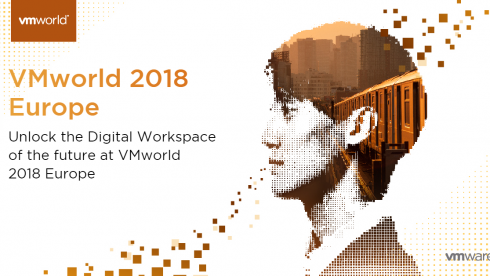DISCLAIMER: this article is older than one year and may not be up to date with recent events or newly available information.
This year Tesco is celebrating its 100-year anniversary. Having begun life as a Hackney market stall in 1919, Tesco has grown to over 6,800 shops across the globe, becoming much more than the grocery chain that most of us know. As well as expanding into clothing, electronics and software, Tesco also offers financial services (Tesco Bank), telecoms (Tesco Mobile) and also data science through its subsidiary dunnhumby.
Digital transformation has been an integral part of Tesco’s journey. Recently, we had the pleasure of hosting Rod Hope, Principal System Engineer, Technology Services, Tesco as he joined Joe Baguley, VP & CTO, VMware EMEA to discuss the role of cloud in supporting Tesco’s technology goals.
The need for scale and speed
As Tesco strives to meet evolving customer demand, technological innovation is essential. And optimising the performance of its substantial team of 3,000 technology staff is a critical piece of this innovation.
“We have to meet the needs of our large and diverse group of developers as quickly as possible. But we were facing technology challenges around scale and speed,” explained Rod. “Increasing numbers of our developers were using the public cloud because it was so quick and easy to get basic infrastructure services. We needed to offer a comparable service – a fast, easy-to-use, self-service IT platform. So with VMware’s support, we built the Tesco Private Cloud.”
Tesco is using a range of VMware solutions for its on-premise cloud. These include VMware Cloud Foundation for integrated cloud infrastructure (compute, storage, networking, and security) with cloud management services, as well as VMware NSX Cloud for networking and security across the hybrid cloud and VMware AppDefense to further bolster application security.
Importance of hybrid cloud
“Previously, there was work our developers couldn’t do on-premise that they could do in the public cloud. Now, we provide an on-premise solution for basic infrastructure services with a public-cloud like experience, without compromising on security,” said Rod. Of course, that doesn’t mean that Tesco doesn’t support the use of public and hybrid clouds for more sophisticated requirements. “Tesco Private Cloud is not trying to compete with machine learning, artificial intelligence, BigQuery and all these higher-level services. Instead we’re delivering a really good infrastructure service and experience to our users.”
Looking to the future, Rod expects the move to highly consumable IT services will continue. “Everything will have to be available as a service and hybrid cloud will be a key enabler. We need to make sure that the IT department isn’t in the way. If our users need to talk to IT, then we’re doing something wrong.”
A new approach to security
When asked about other benefits of the cloud solution, Rod highlighted security. “Over time organisations can accumulate a lot of security equipment, build up a vast number of firewall rules, and lose visibility into what’s happening in the network. By introducing tools like VMware Network Insight, NSX Cloud and VMware AppDefense, we have transformed our security. Giving our internal users visibility into what all of their applications and services are actually doing has been a ground-breaking step forward for us.”
The technology improvements have led to a cultural shift in how Tesco approaches security. “Historically data and IT security were always the responsibility of the security team. We’ve changed that now. If our internal customers are using the public cloud, then they are responsible for doing that securely. Of course, we must give them the tools – like AppDefense – to make it easy for them to do. With VMware we’ve built intrinsic security into the platform.”
When asked about his personal views on the upcoming technology transitions, Rod sticks to the theme of security: “Identity is going to become the new perimeter. Developers are realising that with the introduction of NSX and micro-segmentation becoming the default, the focus is moving away from vulnerabilities in the operating system, and moving it up to the identity layer. This brings with it new challenges which we’re looking into. And of course, we like a challenge,” he concluded.
Category: News & Highlights, Success Stories
Tags: appdefense, Digital transformation, Hybrid Cloud, Joe Baguley, Security, technology, Tesco, vmware





No comments yet